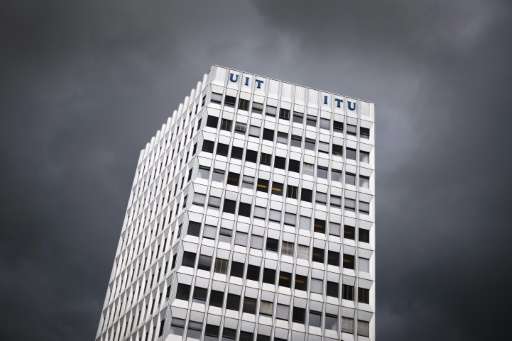Crewman aboard an RAAF AP-3C Orion aircraft looks at his radar screens while searching for the missing Malaysia Airways Flight MH370 over the Indian Ocean on March 24, 2014
World nations struck a landmark deal Wednesday on using satellites to track flights, which could prove key to preventing a repeat of the mysterious disappearance of flight MH370 in March 2014.
Countries reached an accord at a conference hosted by the UN's International Telecommunication Union (ITU) that aimed to improve on the current civilian flight-tracking system which relies on ground-based radars.
"In reaching this agreement... ITU has responded in record time to the expectations of the global community on the major issue concerning global flight tracking," the organisation's secretary general, Houlin Zhao, said in a statement.
The ITU statement made clear the deal was driven by the disappearance of Malaysia Airlines flight MH370 which was lost en route from Kuala Lumpur to Beijing with 239 people onboard.
That tragedy "spurred worldwide discussions on global flight tracking and the need for coordinated action," the organisation said.
Representatives of more than 160 nations attended the talks, known as the World Radiocommunication Conference (WRC).
It was tasked with determining the technical requirements for a tracking system capable of providing complete surveillance of global airspace.
The ITU said a frequency band previously used to transmit signals from aircraft to terrestrial stations would be enabled to send transmissions from aircraft to satellites.
A photo taken on October 7, 2015 shows the headquarters of the International Telecommunication Union (ITU), the UN specialized agency for information and communication technologies in Geneva
This change will enable "real-time tracking of aircraft anywhere in the world," said Francois Rancy, director of the ITU Radiocommunication Bureau.
The new system is expected to be fully implemented in 2017, but Rancy noted that most planes already have the necessary equipment, so compliance will not pose major logistical hurdles.
US Ambassador Decker Anstrom praised the deal, saying it would "enable better tracking and location of aircraft that otherwise could disappear from terrestrial tracking systems."
The UN's International Civil Aviation Organization has previously voiced support for a proposal that would make it obligatory for airlines to track their aircraft using a system that gives its location at 15-minute intervals.
The ground-based radars currently in use can track a plane but coverage is sketchy and fades when aircraft are out at sea or they are flying below a certain altitude, shortcomings that intensified the need to develop a better system.
Finding consensus on other agenda items at the WRC could prove tougher however, including discussions on using existing satellites to provide coordinates to civilian unmanned aircraft systems, or drones.
Countries are also discussing whether to shift the way radio spectrum is used by different radio transmission technologies and applications.
The United States among others wants to see a reallocation of a significant amount of spectrum for mobile technologies and emerging 5G mobile networks.
But this is a touchy subject, as most of the high-quality spectrum is today used by broadcasters, and striking a deal by the end of the conference on November 27 is not guaranteed.
© 2015 AFP
























